Get to Know Terry, a Chicken Farmer & Environmental Steward from Delaware
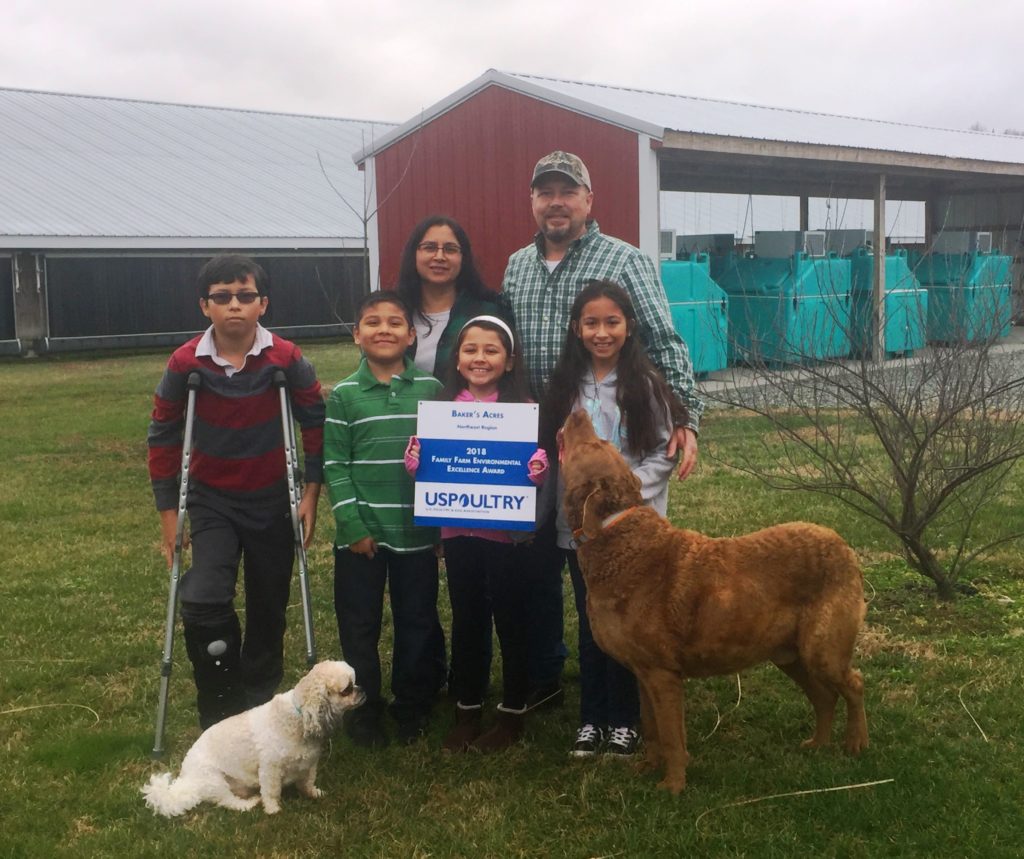
How did you get into chicken farming?
I’m the second generation to work in the poultry industry. My father, however, never managed a farm; he was solely involved in the processing side of the industry. So, after graduating college with a degree in business management and a minor in accounting, I followed in his footsteps and entered the world of poultry processing. For 24 years, I moved up and down the East Coast renovating and/or managing processing plants in Florida, Alabama, North Carolina, Maryland, and Delaware.
When my wife was pregnant with our second child, we discussed our long-term goals. We decided we wanted her to stay at home and raise our children as both our mothers had done for us. I also wanted to be more involved in my children’s lives than my current job would allow.
To achieve our first goal meant delaying my second goal. I had to get a second job – the farm. The good thing about raising chickens is that they don’t care if you care for them at 4 a.m. or 9 p.m., which were the two times I tended to them every day while continuing to work full time at the processing plant.
After expanding the capacity of the farm in 2013, I was able to farm full time. This allowed me to achieve my second goal. I could now spend more time focusing on my family, being involved in the community, and even channeling my new-found passion into helping other growers and the environment.
What do you love about chicken farming?
Getting it just right, and then seeing and feeling the results. When the birds are cared for in a way that more than just satisfies their basic needs, it’s obvious in their actions. For example, when entering a house they’ll come running to greet you, or when you come near them, they’ll puff up their feathers (I guess to look more beautiful and show off a little). Sometimes when you’re working inside the house, you can see them play-fighting or playing a game of steal and seek (where one chicken has a feather, and the others try to take it). You can just feel it when you’re doing a good job!
How do you practice environmental sustainability on your farm?
A comprehensive nutrient management plan (CNMP) has been in place since we purchased the farm in 2007, and we have implemented several new conservation practices over the past ten years. For example:
Litter Management
I don’t generally keep any litter on the farm; I use a manure broker to crust out my houses, and it is all hauled away. We have installed heavy use area pads in front of all chicken house loading doors and the entrances to the manure sheds. These 40’ x 40’ concrete pads allow me to easily clean up the litter that is spilled or left behind by the tires of the catching crew or the litter broker. With the bucket of my tractor, I’m able to scrape the material on the pad back into the chicken house, or manure shed, preventing it from being washed into ditches during a rain event.
Conservation & Wildlife Enhancement
We installed grassy swales for stormwater and environmental buffer zones around the perimeter of the farm. We also have a large pond that has been stocked with a variety of fish, which makes it self-sustaining.
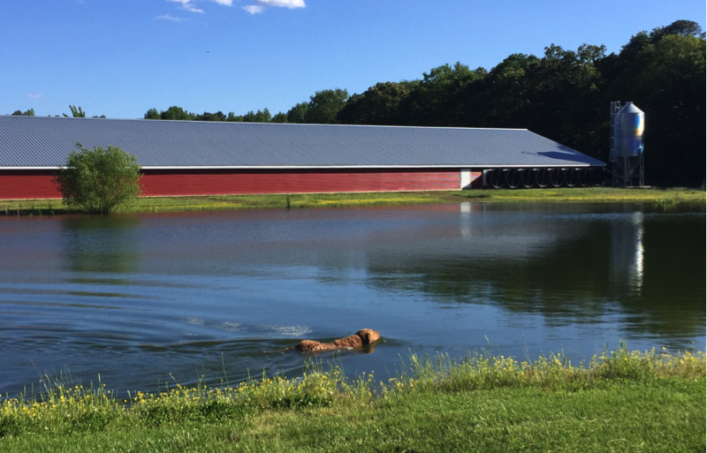
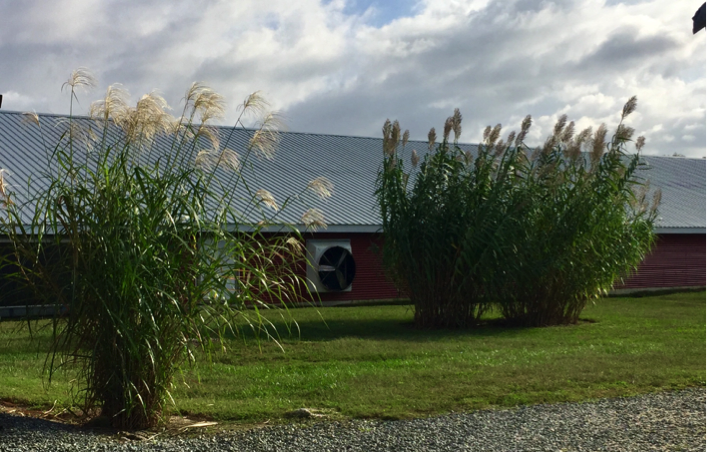
Unique, Innovative Techniques for Mortality Management
I am committed to caring for all the chickens on my farm, but whenever you have a large population (tens of thousands of chickens in my case), some small percentage of that population will be lost to routine causes of death (e.g., illness). I manage routine mortality on my farm by storing the deceased chickens inside on-farm freezer collection units. The chicken carcasses are later transported to a facility for recycling into valuable commodities, such as poultry fat, which can be used as a feedstock for producing biofuels. This process helps ensure the organic matter on our farm is managed in a sustainable way.
What motivated you to adopt sustainable practices/technology on your farm?
In January of 2010, just over two years after purchasing the farm, one of our chicken houses collapsed. It was during the third of three blizzards within a two-week period. The mess that was leftover was unbelievable. As I cleaned it up, I started thinking about the potential environmental effects – and the fact that we lived here and that this mess was right near my house. Soon after that, I began implementing many of the common practices listed above, and then expanded into things I thought would make an even bigger impact.
What’s your least favorite thing about chicken farming?
For the longest time, it was composting the dead birds — and all the negative attributes associated with the practice (e.g., the smell seemed to permeate the entire farm, and the flies were a constant nuisance when we wanted to do anything outside).
But now I use mortality freezer units to store the dead for recycling, so I guess the restrictions on travel would be my least favorite thing now. I have four young children – all in elementary school — and their school schedules don’t often line up with my downtime on the farm (between chicken flocks), so it’s difficult to take them on distant vacations.
What’s one thing about chicken farming you wish more people would know?
There’s been a lot of misinformation spread about how animals are treated as they’re being reared for human consumption. What’s classified as a “Concentrated Animal Feeding Operation” by the US EPA is often maligned by animal welfare groups as being inhumane and unethical, as animals are said to be badly mistreated during their short lives. Though some operations may not be up to par, the majority of people engaged in animal rearing do so with the best interests of the animal at heart – and for good reason.
Contrary to what appears to be the assertion by animal welfare groups, most farmers and ranchers who rear animals for human consumption are decent and caring people. It’s simply not in their nature to treat animals poorly, whether they’re domestic pets or animals ultimately destined for slaughter. There may be some individuals who don’t follow this school of thought, but they are in the minority. People engaged in this industry for the long haul are fully invested in the welfare of the animals within their charge, no matter their ultimate destination.
But there’s a bigger point to make here, as well. Put quite simply, animals that are healthy and content with their way of life represent a good business investment for the rancher or the farmer. The more they are cared for, the more they are likely to grow and remain healthy and thus represent a more valuable commodity at the end of their lives.
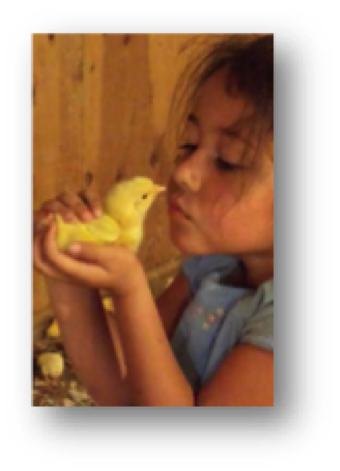
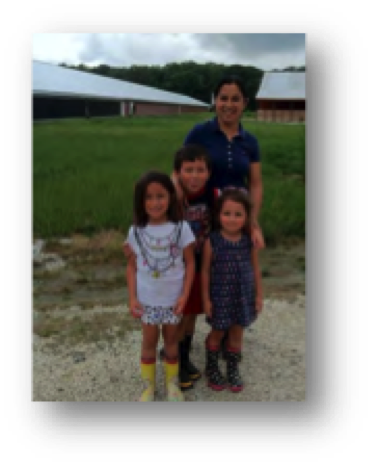
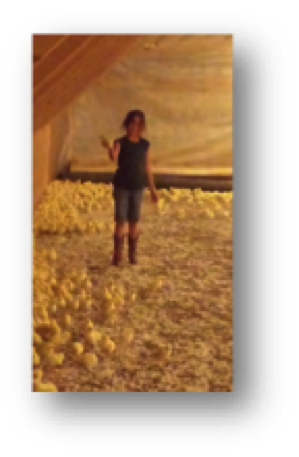
Animals raised in a caring farm environment are never short of food, water, proper shelter, safety, comfort and adequate veterinary care. They live a life that’s free from hunger, thirst, malnutrition or any ongoing discomfort. They are treated to relieve any disease or injury and never suffer from pain for any period of time. They are allowed to exist in a natural environment and to live a normal life. These animals absolutely do not live in an environment of fear, or constant distress.
It’s important to remember that there are stringent laws set down by federal and state governments that protect how farm animals are handled and cared for. Yet these laws represent a baseline as far as the most caring farmers and ranchers are concerned. They commit to going over and above what lawmakers demand, and quite rightly.
The top farmers and ranchers understand the animals in their charge and know what contributes to their comfort. All animals are different and certain species require certain approaches. They may have different temperaments and react according to how their human caretakers interact with them.
With chickens, farmers fully understand they tend to be rather timid and when young, prefer to avoid wide-open spaces. Therefore to maximize their comfort the houses are sectioned off, essentially made to expand as the birds grow. This ensures that they have little to fear from the unknown, or from predators that may appear in the night. Farmers and ranchers also understand that chickens like to interact and will form natural groups. They are therefore provided with areas to behave according to their most natural instincts.
Chickens are kept in carefully controlled environments, where the climate is always conducive to their comfort and productivity through the various growth stages of their lives. They are never subjected to harsh weather environments, and the threat of predators and risk of disease is minimized as much as possible with a farm’s biosecurity protocols. The bedding provided for them is kept as dry as possible, and the right amount of fresh air, light, and humidity is maintained to ensure they’re comfortable. Furthermore, wash down and clean out practices are regularly performed to provide the animals with the cleanest environment possible.
When animals are raised for consumption by humans, there will always come a day when it’s necessary for them to enter the last stage of the food chain. Some welfare groups would have you believe that this is an inhumane process, but in truth, it’s very carefully designed and managed to cause the least possible amount of distress. The animal suffers far less distress than they would if they existed in the wild, where they would be far more likely to endure an unpleasant death caused by lingering illness, disease or animal predation.
What’s your favorite chicken dish?
My wife is Hispanic, and she makes a shredded chicken dish in a large flat, crisp tortilla shell with mashed black beans, Latin cheese (queso fresco), spicy green salsa, and fresh lettuce. I don’t even think it has a specific name, and I wish I could share the recipe, but she never references a recipe – she just makes it!